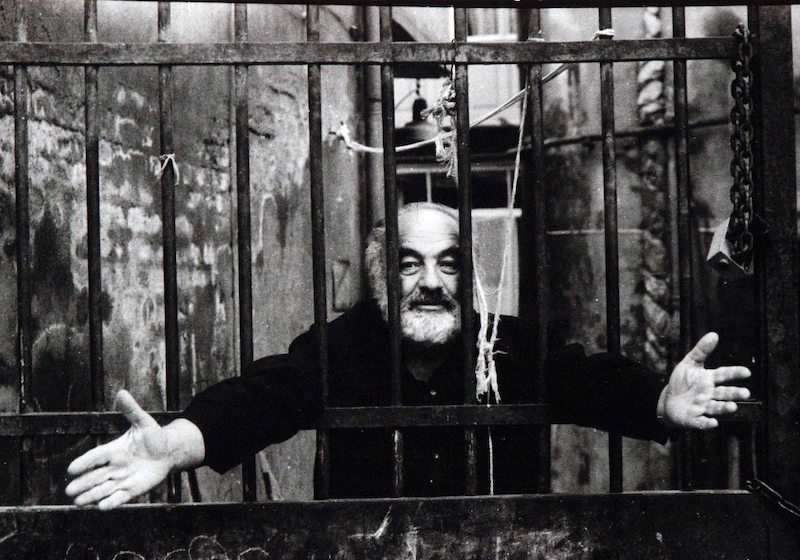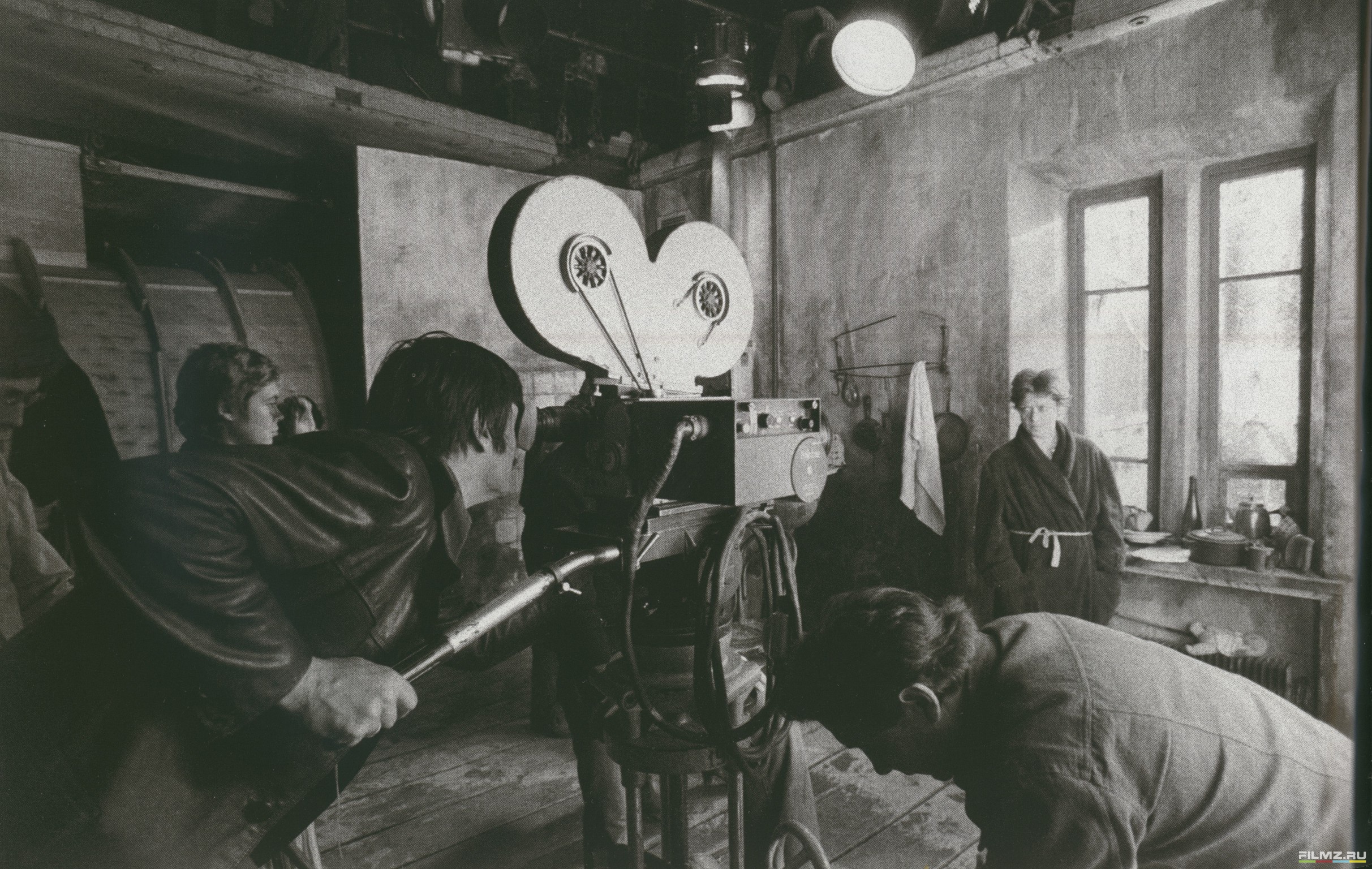Sergei Parajanov: where to start with his films
“Whoever tries to imitate me is lost,” said Armenian filmmaker Sergei Parajanov. Ninety-seven years after his birth, his subversive and surrealist work remains unparalleled, yet continues to haunt film-makers and film-lovers across the globe — including Lady Gaga in her latest music video, 911. Yet, for those unacquainted with the bizarre world of Sergei Parajanov, plagued with symbolism and folk references, venturing into his unfathomable cinematic domain can seem daunting.
Born on 9 January 1924 to Armenian parents in Tbilisi, Parajanov’s early artistic flair earned him a place at Moscow’s VGIK, the Soviet Union’s most prestigious film school. While he learned from the masters of Socialist Realism, Parajanov was not drawn to the unadorned cinematic depiction of sociopolitical struggles, and he later disavowed the seven films he shot in the 1950s and early 1960s. In 1962, when his later-friend Andrei Tarkovsky released Ivan’s Childhood, the non-linear narrative structure and allegorical nature of the film inspired Parajanov to move beyond the pre-established boundaries of Soviet filmmaking and provide an outlet to his magic inner world, prefacing his most prolific artistic period in the 60s and early 70s.
Like many great masters, Parajanov’s life and artistic career were turbulent and misunderstood. He had already spent a brief stint in a Georgian prison in 1947 for committing “homosexual acts” — his partner-in-crime was none other than a Soviet State Security Officer — and, in 1973, when his non-conformist work caught the attention the Soviet authorities, he was once again sentenced to five years in a Siberian gulag on multiple charges. His supposed litany of likely trumped-up crimes including homosexuality, bribery, and the distribution of pornography.
During his time in prison — his sentence reduced from five to four years after pressure from renowned filmmakers such as Federico Fellini, Jean-Luc Godard, Luis Buñuel, and Tarkovsky himself — Parajanov’s duties including sewing sacks. Instead, the artist learned to make dolls from the leftover cloth. He crafted eclectic collages, drawings, photomontages, and card games, which he continued to make after he left prison, during the 15 years after his release that saw him banned from filmmaking. His evocative visual art, on display in Yerevan’s Sergei Parajanov’s house-museum, is a timeless testimony of the artist’s unique aesthetic vision beyond cinema.
Parajanov’s career was tragically cut short when he died of lung cancer in 1990, shortly after he had resumed filmmaking. Yet his work was prolific, all the more laudable considering his constant struggle against the Soviet Union’s iron fist. He lived in Georgia, Russia, Ukraine, and Armenia, and brought the folkloric traditions of each of these countries to life, as well as the lesser-known stories of other, fictional and non-fictional, misunderstood souls. He received praise from the most brilliant filmmakers of his generation, yet suffered from artistic censorship and poverty at home. The legacy of the “magician of cinema” continues to win posthumous awards and brings audiences en masse to his retrospectives all around the world. Here’s our step-by-step guide to delving into his wonderful universe.
The Colour of Pomegranates
The Colour of Pomegranates is the obligatory starting point in any Parajanov journey, both for its international repercussions, and for its significance to Parajanov’s style. The Colour of Pomegranates is a magical meditation on the life story of Sayat-Nova, an 18th-century Armenian ashug — a lyrical poet — who wrote in Armenian, Azerbaijani, Georgian, and Persian. Rather than appearing in conventional scenes, in The Colour of Pomegranates, actors dressed in outlandish costumes appear in colourful, hallucinatory tableaux representing the poet’s inner world, where the only narrative appears in the form of a young boy who grows up to become a monk. Released in 1969, The Colour of Pomegranates is greatly influenced by Tarkovsky’s 1966 film Andrei Rublev, based on the life of an eponymous 15th-century icon painter.
The Colour of Pomegranates is an immersive fusion between film, poetry, and theatre, filled with Armenian folk elements and symbolism. Parajanov himself compared it to a Persian jewellery case: beautiful on the outside, and filled with intricate details on the inside. While there are endless analyses of the film out there, as a first-time Parajanov watcher, the key to enjoying the crown jewel of his work is to simply relish it as an explosion of beauty and colour, rather than trying to carefully understand its layers on first viewing.
The Colour of Pomegranates is available to watch on Kino Klassica, Youtube, BFI Player, and Amazon Prime.
Shadows of Forgotten Ancestors
Released in 1964, Shadows of Forgotten Ancestors is, chronologically, the filmmaker’s first work in his true style. The story, based on a 1911 book by Ukrainian writer Mykhailo Kotsiubynsky, also has the most coherent storyline of all of Parajanov’s films, making it somewhat of a relief after The Colour of Pomegranate’s poetic illegibility. Shot in the Ukrainian Carpathians, and drawing from elements of local folk legends and ceremonies of the Hutsul people — an ethnic group from western Ukraine and Romania — Shadows of Forgotten Ancestors tells the tragic love story of Ivan and Marichka. The two lovers come from rival families who forbid their romance, resulting in a trieste which only brings death, doom, and despair to their village. The film is shot in the local Hutsul language, and weaves a symbolic tableau of crosses, lambs, graves, and ghosts.
In Shadows of Forgotten Ancestors, Parajanov also shows traces of his notoriously unconventional use of colour: in moments of mourning, his scenes turn black-and-white, while passion is represented through bright reds. These formal experiments, together with the film’s religious and ethno-nationalist elements, raised eyebrows amongst the Soviet authorities, who ultimately blacklisted Parajanov. Rather than drawing attention away from the film, the move highlighted its relevance both then and now to understanding the essence of Parajanov’s non-conformist oeuvre.
Shadows of Forgotten Ancestors is available to watch on MUBI, Amazon Prime, and Youtube.
Ashik Kerib
After portraying the legends of Armenia and Georgia (the latter in his 1985 film The Legend of Suram Fortress) Parajanov completes his cinematic Caucasian tour by evoking the myths and aesthetics of Azerbaijan in Ashik Kerib. Released in 1988, two years before his death, Parajanov dedicated the film to his close friend and mentor Tarkovsky, who had died in 1986. Based on an eponymous short story by Mikhail Lermontov, Ashik Kerib tells the story of a troubadour who wanders the land, hoping to gather enough money to wed his beloved within the thousand nights she promises to wait. Told with minimal dialogue, featuring stunning shots of Azerbaijani landscapes, and weaving plot changes in the narrative through Azerbaijani folk music and enigmatic captions, Ashik Kerib channels Parajanov’s mature style, and epitomises his esoteric mastery of the art film genre.
Ashik Kerib is available to watch on Amazon Prime, Youtube, and Pantaflix.
Parajanov: The Last Spring
While not made by Parajanov himself, Parajanov: The Last Spring, a behind-the-scenes documentary about the filmmaker’s personal life and artistic plight, is a lesser-known must-watch to understand the genius behind the oeuvre. It was released in 1992, and directed by Russian-Armenian filmmaker Mikhail Vartanov, Parajanov’s life-long friend and collaborator.
Made against the bleak backdrop of the First Nagorno-Karabakh War, Parajanov: The Last Spring is a gripping film that juxtaposes censored scenes from Parajanov’s films, letters he wrote from the Siberian gulag, the only surviving footage of his unfinished last film The Confession, and his last day at work in 1990. The Last Spring, with The Colour of the Land and Minas: a Requiem completes a documentary trilogy made by Vartanov throughout his lifetime, that offers a lens into the unseen oppression suffered by Parajanov and other artists at the hands of Soviet oppression. Although wordless, the documentary is painfully telling of the life of a misunderstood, mistreated genius, and reveals how, as a result of his endless commitment to the creative cause, Parajanov’s legacy continues to be inimitable and endlessly inspiring.


